Abstract
Under ambient conditions, sulfur and nitrogen oxides can react with photochemical products and airborne particles to form acidic vapors and aerosols. Inhalation toxicological studies were conducted, exposing laboratory animals, at rest and during exercise, to multicomponent atmospheric mixtures under conditions favorable to the formation of acidic reaction products. Effects of acid and ozone mixtures on early and late clearance of insoluble radioactive particles in the lungs of rats appeared to be dominated by the oxidant component (i.e., the mixture did cause effects that were significantly different from those of ozone alone). Histopathological evaluations showed that sulfuric acid particles alone did not cause inflammatory responses in centriacinar units of rat lung parenchyma (expressed in terms of percent lesion area) but did cause significant damage (cell killing followed by a wave of cell replication) in nasal respiratory epithelium, as measured by uptake of tritiated thymidine in the DNA of replicating cells. Mixtures of ozone and nitrogen dioxide, which form nitric acid, caused significant inflammatory responses in lung parenchyma (in excess of effects seen in rats exposed to ozone alone), but did not damage nasal epithelium. Mixtures containing acidic sulfate particles, ozone, and nitrogen dioxide damaged both lung parenchyma and nasal epithelia. In rats exposed at rest, the response of the lung appeared to be dominated by the oxidant gas-phase components, while responses in the nose were dominated by the acidic particles. In rats exposed at exercise, however, mixtures of ozone and sulfuric acid particles significantly (2.5-fold) elevated the degree of lung lesion formation over that seen in rats exposed to ozone alone under an identical exercise protocol.
Full text
PDF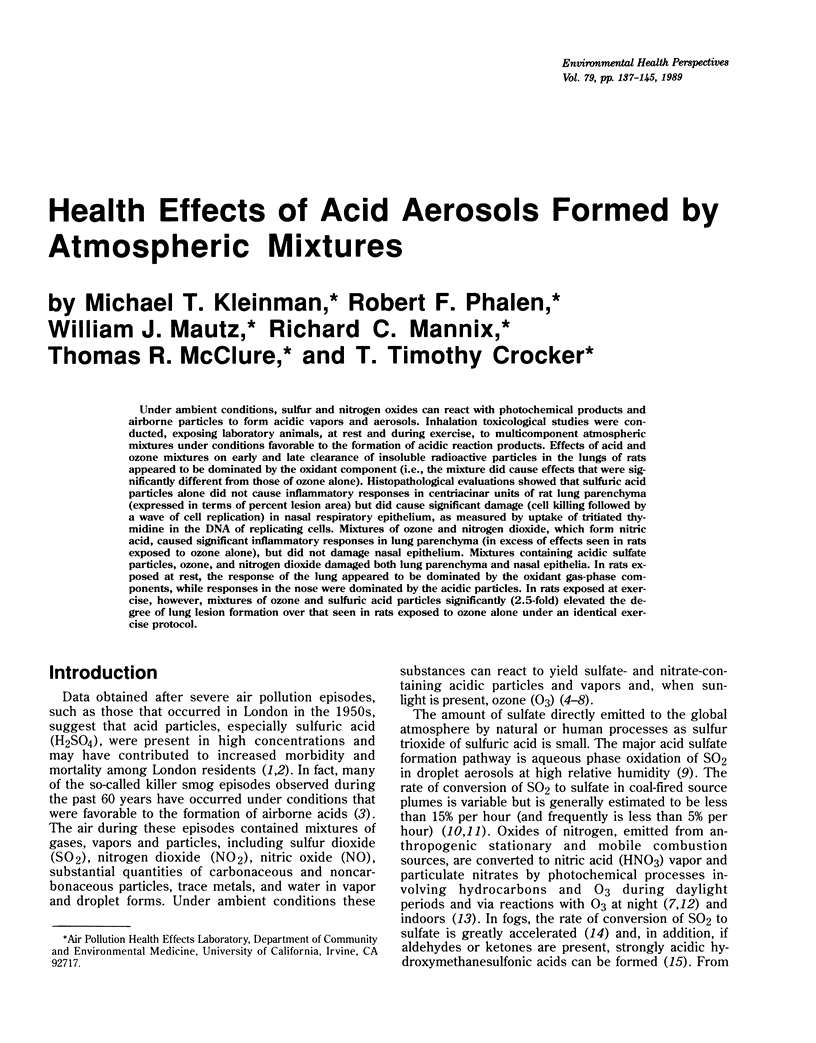
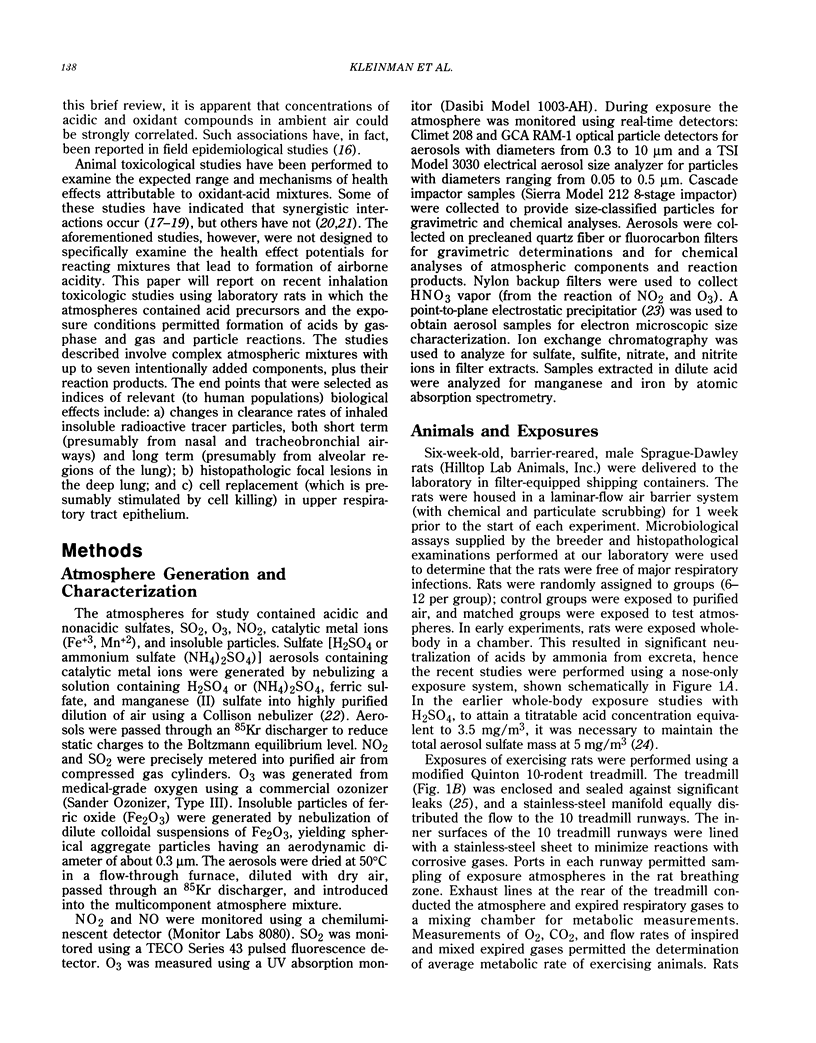
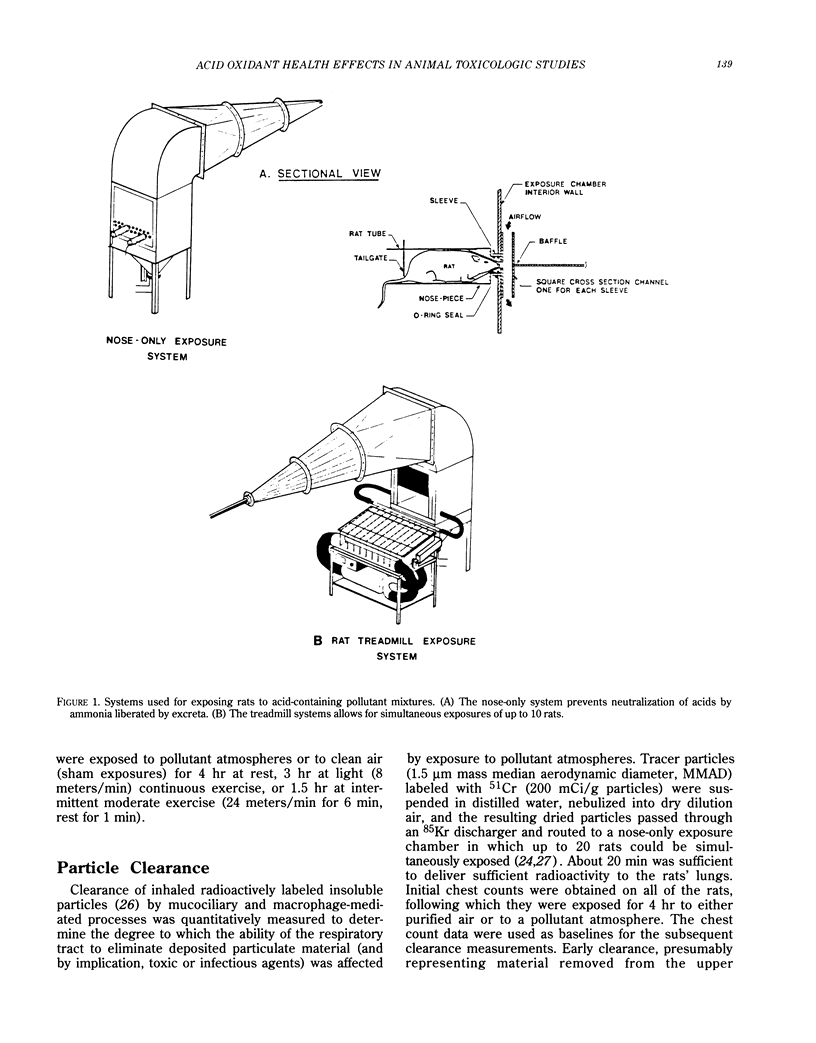
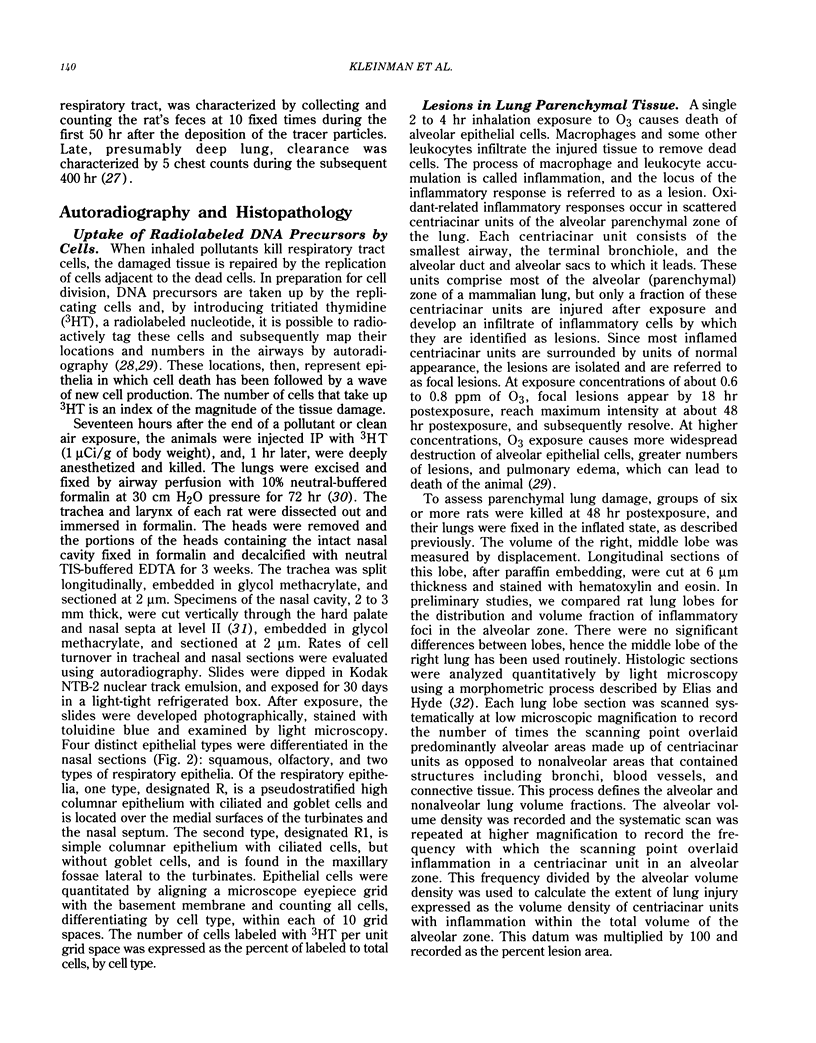
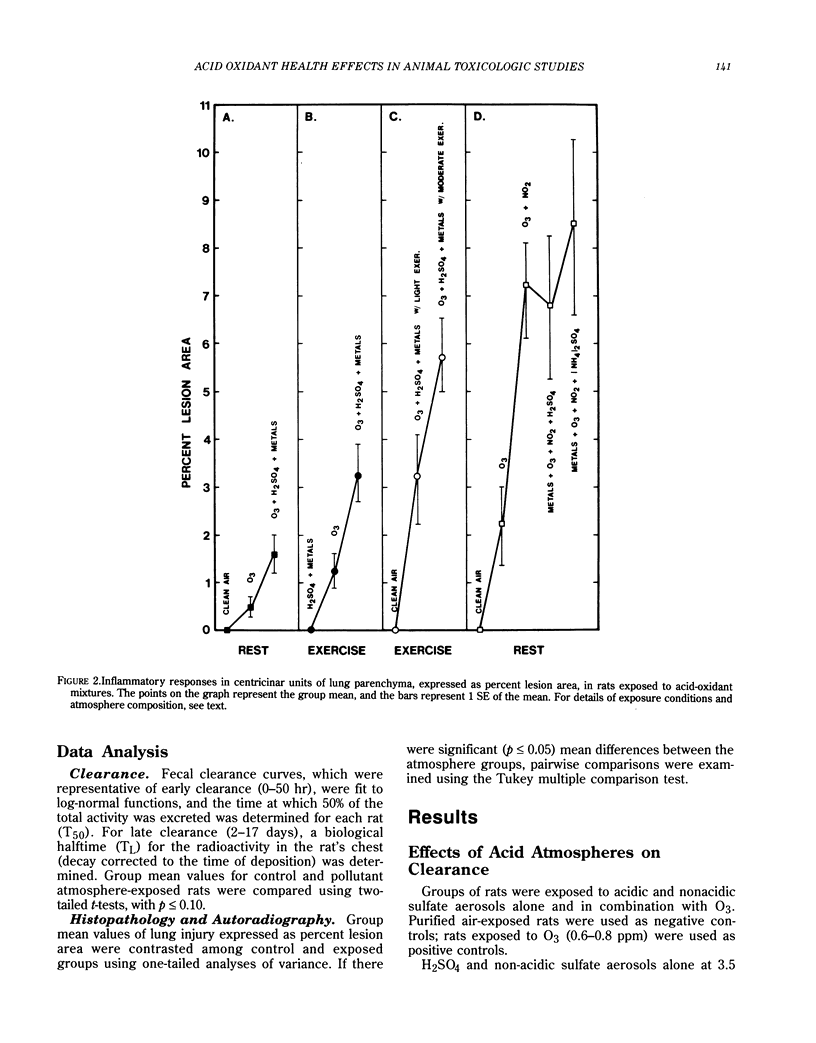
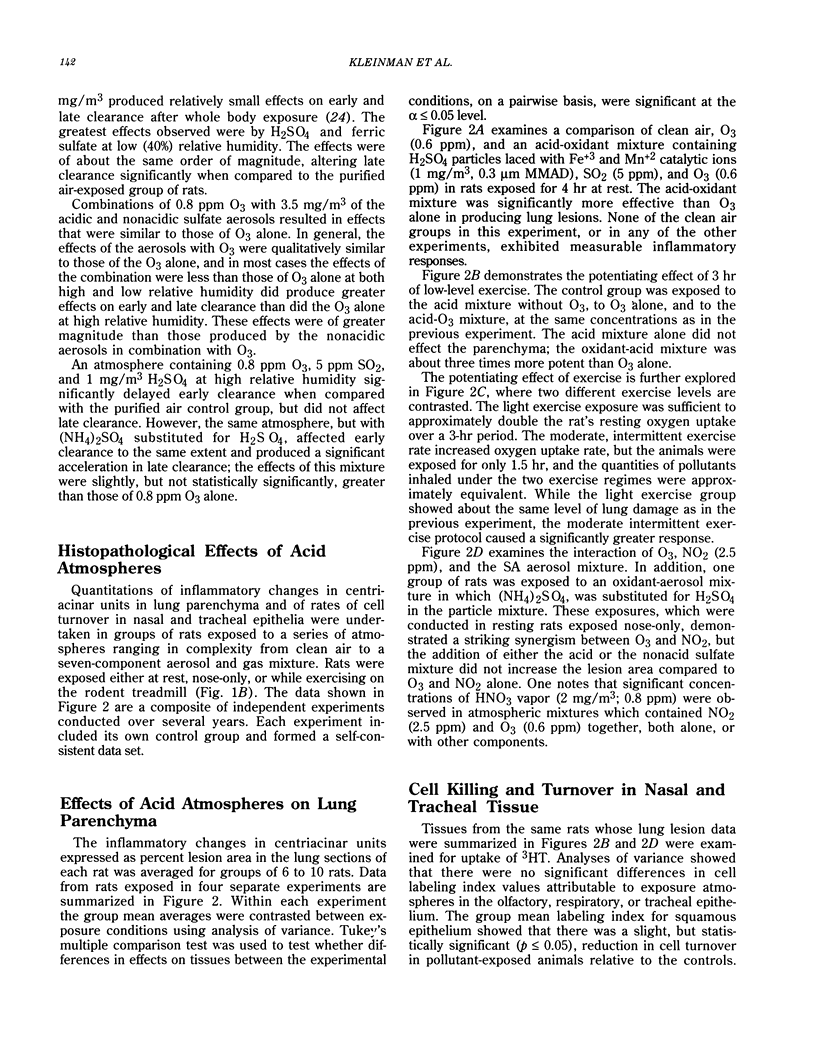
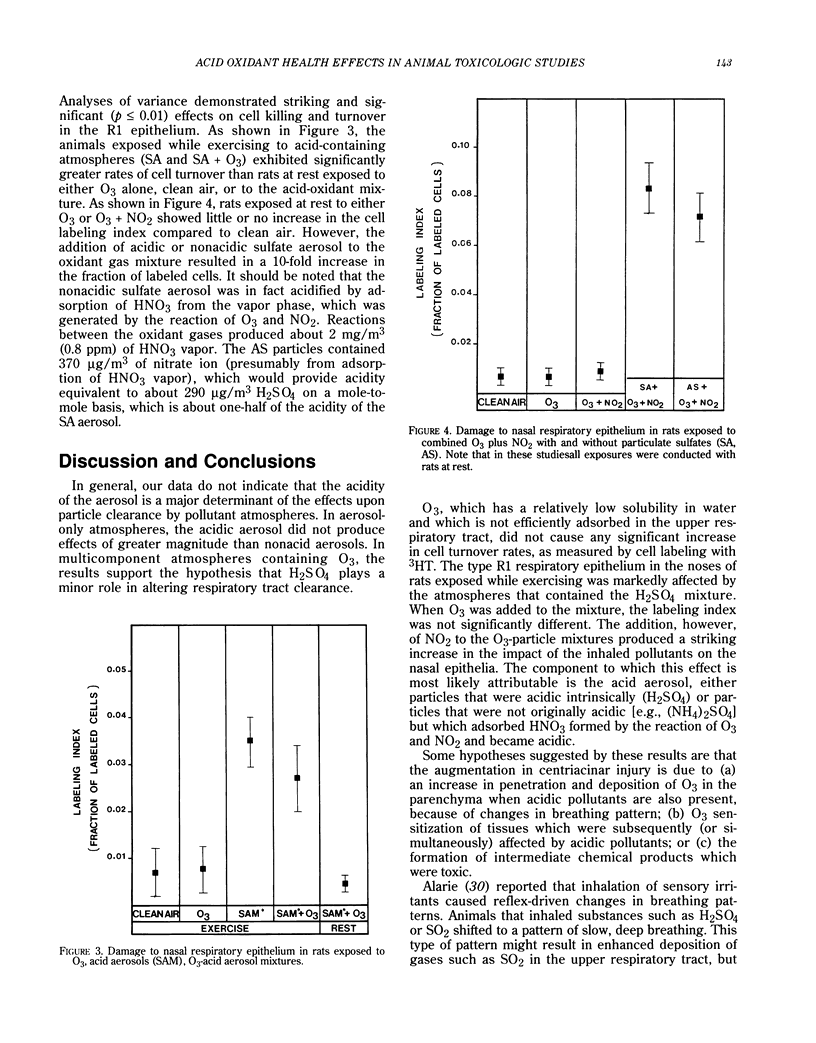
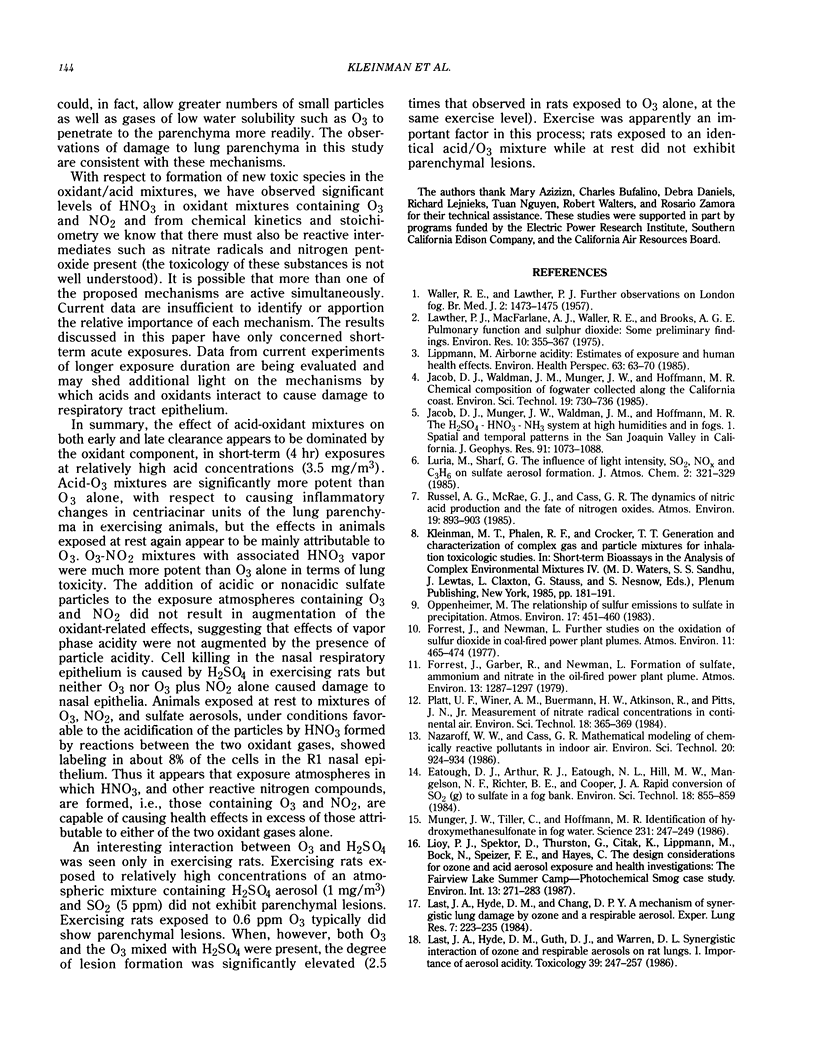
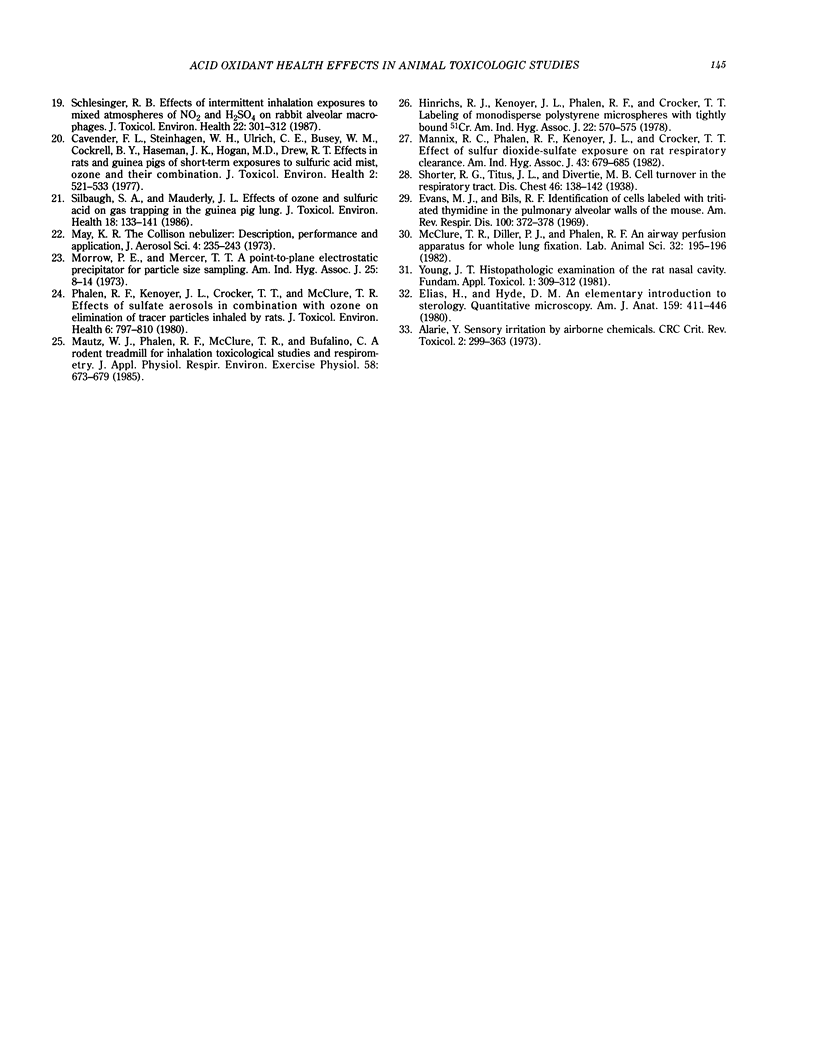
Selected References
These references are in PubMed. This may not be the complete list of references from this article.
- Alarie Y. Sensory irritation by airborne chemicals. CRC Crit Rev Toxicol. 1973 Nov;2(3):299–363. doi: 10.3109/10408447309082020. [DOI] [PubMed] [Google Scholar]
- Cavender F. L., Steinhagen W. H., Ulrich C. E., Busey W. M., Cockrell B. Y., Haseman J. K., Hogan M. D., Drew R. T. Effects in rats and guinea pigs of short-term exposures to sulfuric acid mist, ozone, and their combination. J Toxicol Environ Health. 1977 Oct;3(3):521–533. doi: 10.1080/15287397709529584. [DOI] [PubMed] [Google Scholar]
- Elias H., Hyde D. M. An elementary introduction to stereology (quantitative microscopy). Am J Anat. 1980 Dec;159(4):412–446. doi: 10.1002/aja.1001590407. [DOI] [PubMed] [Google Scholar]
- Evans M. J., Bils R. F. Identification of cells labeled with tritiated thymidine in the pulmonary alveolar walls of the mouse. Am Rev Respir Dis. 1969 Sep;100(3):372–378. doi: 10.1164/arrd.1969.100.3.372. [DOI] [PubMed] [Google Scholar]
- Hinrichs R. J., Kenoyer J. L., Phalen R. F., Crocker T. T. Labeling of monodisperse polystyrene microspheres with tightly bound 51Cr. Am Ind Hyg Assoc J. 1978 Jul;39(7):570–575. doi: 10.1080/0002889778507810. [DOI] [PubMed] [Google Scholar]
- Last J. A., Hyde D. M., Chang D. P. A mechanism of synergistic lung damage by ozone and a respirable aerosol. Exp Lung Res. 1984;7(3-4):223–235. doi: 10.3109/01902148409087915. [DOI] [PubMed] [Google Scholar]
- Last J. A., Hyde D. M., Guth D. J., Warren D. L. Synergistic interaction of ozone and respirable aerosols on rat lungs. I. Importance of aerosol acidity. Toxicology. 1986 Jun;39(3):247–257. doi: 10.1016/0300-483x(86)90026-0. [DOI] [PubMed] [Google Scholar]
- Lawther P. J., Macfarlane A. J., Waller R. E., Brooks A. G. Pulmonary function and sulphur dioxide, some preliminary findings. Environ Res. 1975 Dec;10(3):355–367. doi: 10.1016/0013-9351(75)90031-6. [DOI] [PubMed] [Google Scholar]
- Lippmann M. Airborne acidity: estimates of exposure and human health effects. Environ Health Perspect. 1985 Nov;63:63–70. doi: 10.1289/ehp.856363. [DOI] [PMC free article] [PubMed] [Google Scholar]
- MORROW P. E., MERCER T. T. A POINT-TO-PLANE ELECTROSTATIC PRECIPITATOR FOR PARTICLE SIZE SAMPLING. Am Ind Hyg Assoc J. 1964 Jan-Feb;25:8–14. doi: 10.1080/00028896409342547. [DOI] [PubMed] [Google Scholar]
- Mannix R. C., Phalen R. F., Kenoyer J. L., Crocker T. T. Effect of sulfur dioxide-sulfate exposure on rat respiratory tract clearance. Am Ind Hyg Assoc J. 1982 Sep;43(9):679–685. doi: 10.1080/15298668291410413. [DOI] [PubMed] [Google Scholar]
- Mautz W. J., Phalen R. F., McClure T. R., Bufalino C. A rodent treadmill for inhalation toxicological studies and respirometry. J Appl Physiol (1985) 1985 Feb;58(2):673–679. doi: 10.1152/jappl.1985.58.2.673. [DOI] [PubMed] [Google Scholar]
- McClure T. R., Diller P. J., Phalen R. F. An airway perfusion apparatus for whole lung fixation. Lab Anim Sci. 1982 Apr;32(2):195–196. [PubMed] [Google Scholar]
- Munger J. W., Tiller C., Hoffmann M. R. Identification of hydroxymethanesulfonate in fog water. Science. 1986 Jan 17;231(4735):247–249. doi: 10.1126/science.231.4735.247. [DOI] [PubMed] [Google Scholar]
- Phalen R. F., Kenoyer J. L., Crocker T. T., McClure T. R. Effects of sulfate aerosols in combination with ozone on elimination of tracer particles inhaled by rats. J Toxicol Environ Health. 1980 Jul;6(4):797–810. doi: 10.1080/15287398009529898. [DOI] [PubMed] [Google Scholar]
- SHORTER R. G., TITUS J. L., DIVERTIE M. B. CELL TURNOVER IN THE RESPIRATORY TRACT. Dis Chest. 1964 Aug;46:138–142. doi: 10.1378/chest.46.2.138. [DOI] [PubMed] [Google Scholar]
- Schlesinger R. B. Effects of intermittent inhalation exposures to mixed atmospheres of NO2 and H2SO4 on rabbit alveolar macrophages. J Toxicol Environ Health. 1987;22(3):301–312. doi: 10.1080/15287398709531073. [DOI] [PubMed] [Google Scholar]
- Silbaugh S. A., Mauderly J. L. Effects of ozone and sulfuric acid aerosol on gas trapping in the guinea pig lung. J Toxicol Environ Health. 1986;18(1):133–141. doi: 10.1080/15287398609530854. [DOI] [PubMed] [Google Scholar]
- WALLER R. E., LAWTHER P. J. Further observations on London fog. Br Med J. 1957 Dec 21;2(5059):1473–1475. doi: 10.1136/bmj.2.5059.1473. [DOI] [PMC free article] [PubMed] [Google Scholar]
- Young J. T. Histopathologic examination of the rat nasal cavity. Fundam Appl Toxicol. 1981 Jul-Aug;1(4):309–312. doi: 10.1016/s0272-0590(81)80037-1. [DOI] [PubMed] [Google Scholar]


